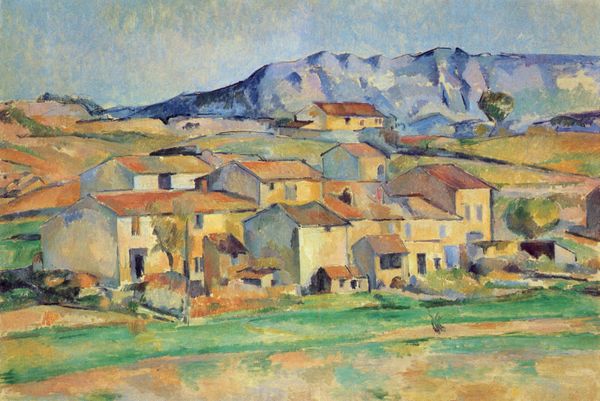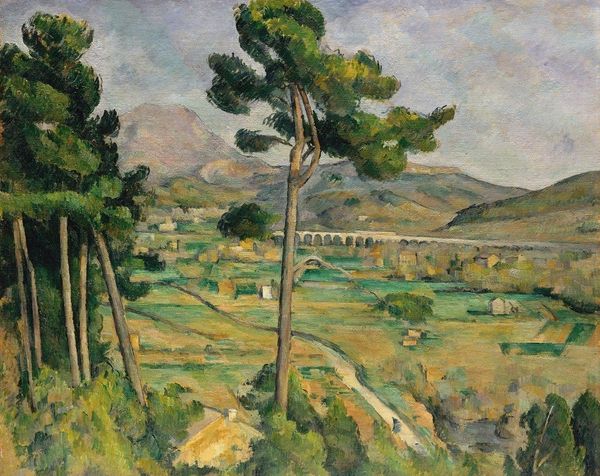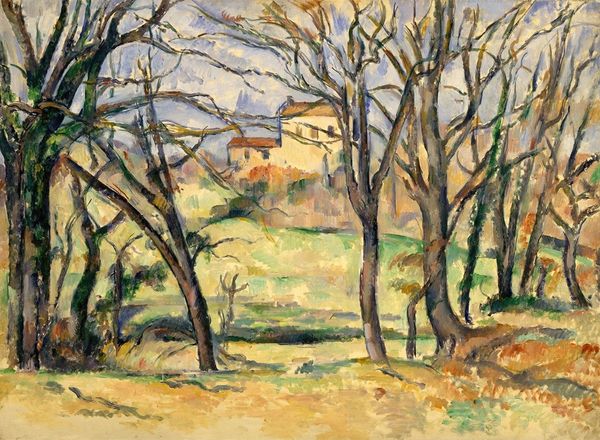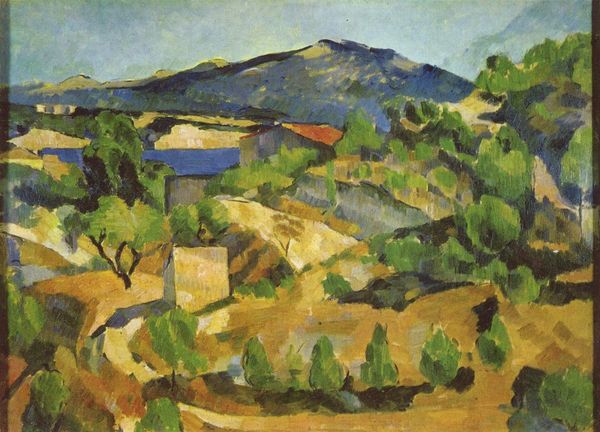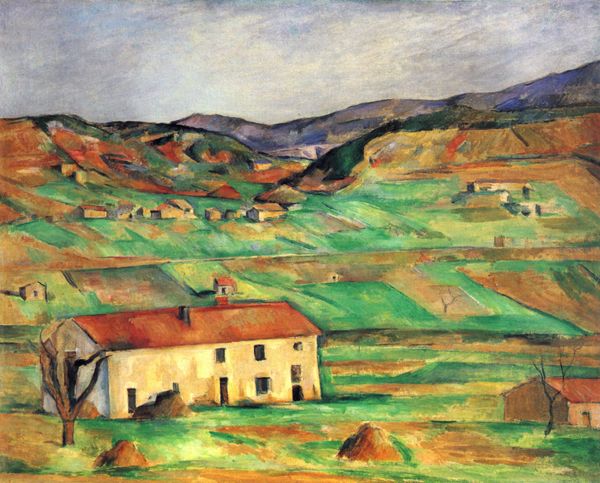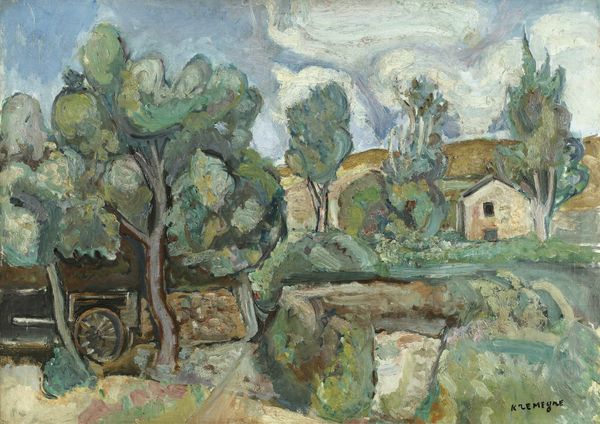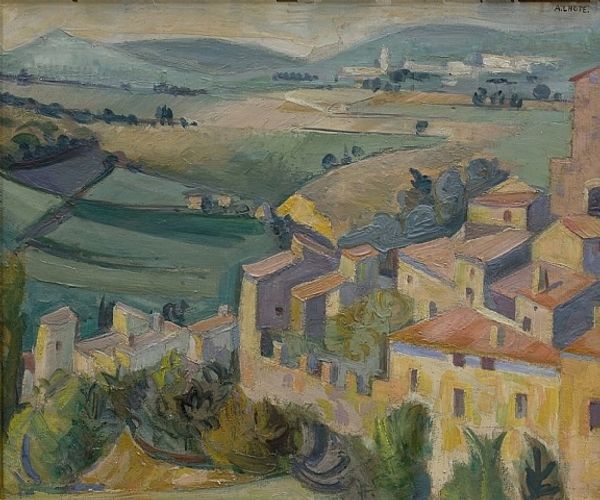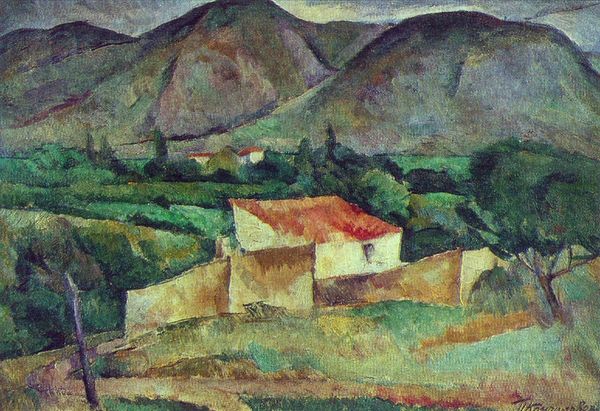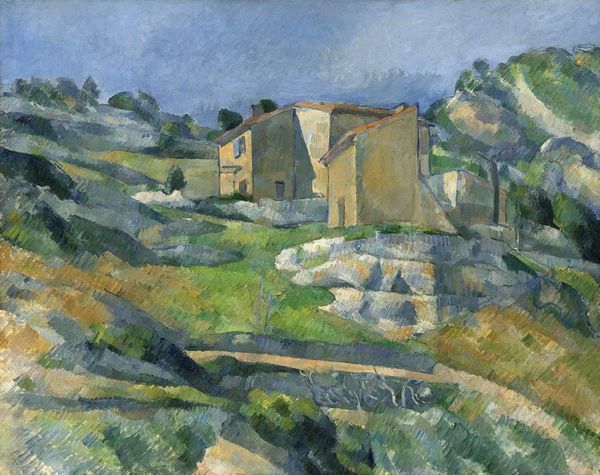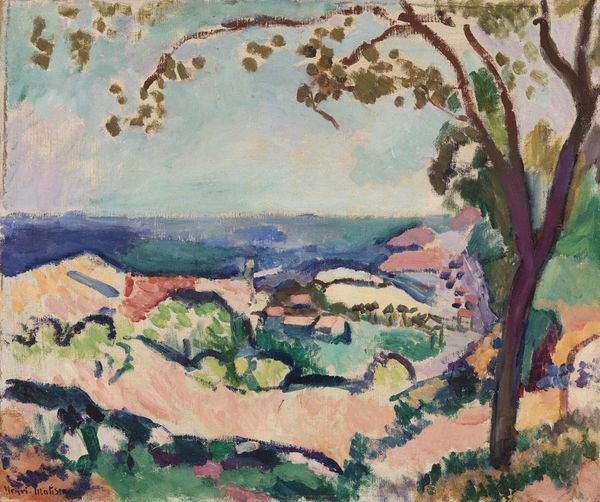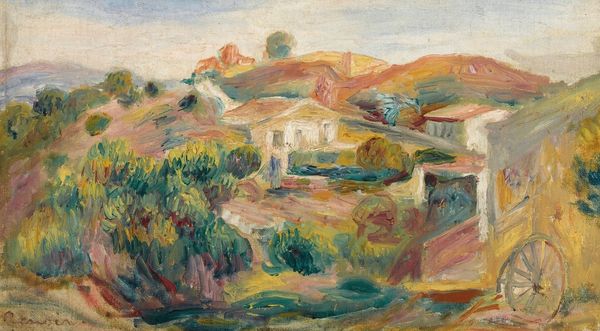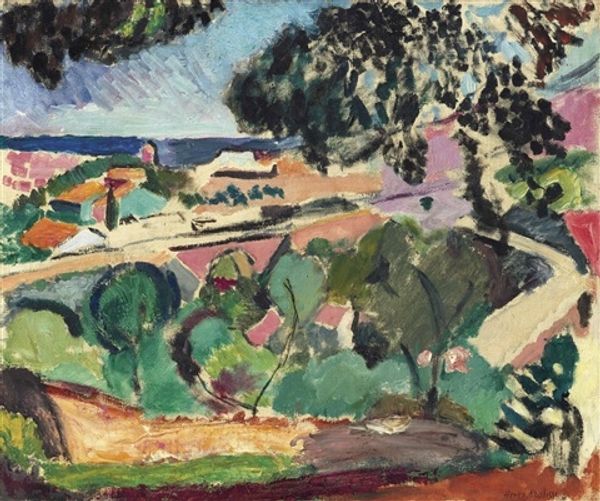
painting, oil-paint
#
painting
#
oil-paint
#
landscape
#
oil painting
#
cityscape
#
post-impressionism
#
modernism
#
regionalism
Copyright: Public Domain: Artvee
Paul Cézanne's "House in Provence" is an exercise in subverting the established artistic conventions of late 19th-century France. As the Impressionist movement began to ossify into an accepted style, Cézanne, working in isolation in his native Provence, asked what it meant to truly see, and what it meant to be true to that vision on canvas. Note how Cézanne flattens the space, emphasizing the two-dimensionality of the picture plane while still evoking a sense of depth. The house is solid, rendered in planes of muted color, connected to the landscape by a shared visual language. This was a conscious rejection of academic painting, which prized illusionism above all else. Cézanne's influence on later movements like Cubism is well documented. To better understand Cézanne's project, consider the critical writing of his time and explore the records of the art academies he challenged. In the end, art is always a product of its time, place, and the institutions it confronts.
Comments
No comments
Be the first to comment and join the conversation on the ultimate creative platform.
